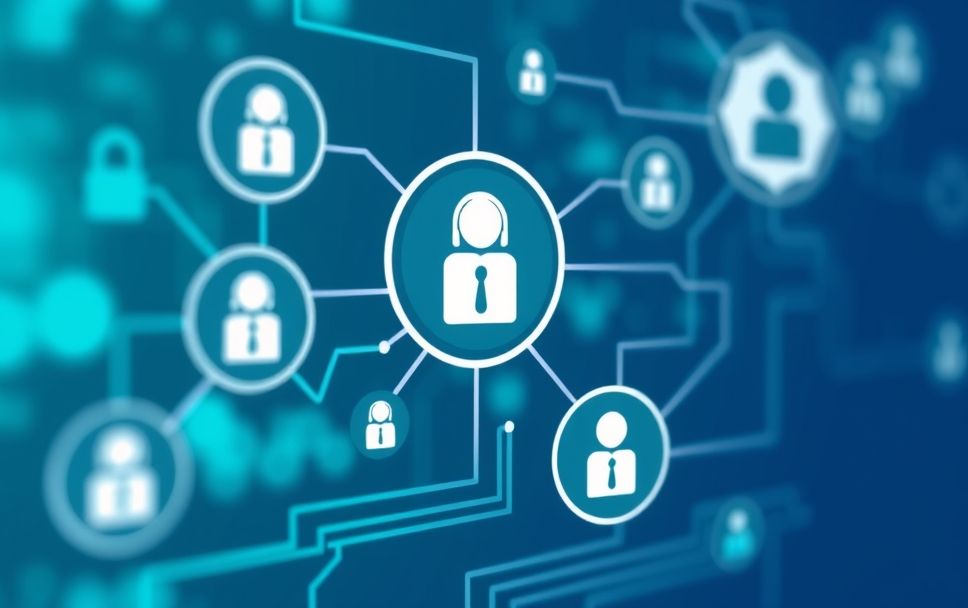Understanding Identity Management
Identity Management (IdM) refers to the policies, processes, and technologies used to manage and secure digital identities. In an increasingly digital world, where businesses and individuals rely heavily on technology, IdM plays a crucial role in safeguarding sensitive information and ensuring that only authorized users have access to specific data and systems.
At its core, Identity Management encompasses the creation, maintenance, and deletion of user identities within a system. This includes authentication (verifying the identity of a user) and authorization (determining what an authenticated user is allowed to do). As cyber threats evolve, effective IdM becomes vital in protecting organizations from data breaches, identity theft, and unauthorized access.
The Importance of Identity Management in Cybersecurity
With the rise of artificial intelligence and machine learning in cybersecurity, Identity Management has become even more critical. Here are some reasons why:
- Protection Against Data Breaches: A robust IdM system helps organizations mitigate the risk of data breaches by ensuring that only authorized personnel can access sensitive data.
- Compliance with Regulations: Many industries are subject to regulations that require strict identity management practices to protect customer data.
- Streamlined Access Management: IdM simplifies access management through Single Sign-On (SSO) solutions, allowing users to authenticate once and gain access to multiple applications.
- Enhanced User Experience: Properly implemented IdM can lead to a better user experience, reducing friction in authentication processes.
Key Components of Identity Management
Identity Management consists of several key components that work together to create a secure environment:
- User Provisioning: This is the process of creating and managing user accounts, including assigning roles and permissions.
- Authentication: The method of verifying a user’s identity through passwords, biometrics, or other means.
- Authorization: Determining what resources a user can access and what actions they can perform.
- Identity Governance: Policies and procedures for managing user identities and ensuring compliance with regulations.
- Monitoring and Auditing: Continuous tracking of user activity to detect and respond to suspicious behavior.
Applications of Identity Management in Everyday Scenarios
Identity Management is not just about securing data; it has practical applications in various scenarios:
- Corporate Environments: In large organizations, IdM solutions can streamline employee onboarding processes, ensuring that new hires receive the necessary access rights without delay.
- Healthcare: IdM is crucial in healthcare settings to protect patient information and ensure that only authorized personnel can access sensitive records.
- Banking: Financial institutions utilize IdM to protect customer data and comply with strict regulations like the GDPR.
- Education: Educational institutions implement IdM systems to manage student access to online resources, ensuring that only enrolled students can access course materials.
How to Implement Identity Management in Your Organization
Implementing an effective Identity Management system requires careful planning and execution. Here are steps to get started:
- Assess Your Needs: Determine the specific identity management needs of your organization based on your size, industry, and regulatory requirements.
- Choose the Right Tools: Research and select IdM tools that fit your organization’s needs, considering factors like scalability and integration capabilities.
- Develop Policies: Establish clear policies for user provisioning, access management, and identity governance.
- Train Staff: Ensure that employees understand the importance of IdM and how to use the tools effectively.
- Monitor and Improve: Continually monitor the effectiveness of your IdM system and make adjustments as needed.
Related Concepts in Identity Management
To fully grasp Identity Management, it’s essential to understand its relationship with other concepts:
- Access Management: This refers to the process of granting or denying users the ability to access resources.
- Multi-Factor Authentication (MFA): A security mechanism requiring multiple forms of verification before granting access.
- Single Sign-On (SSO): Allows users to authenticate once and gain access to multiple applications without needing to log in again.
- Federated Identity Management: A system that allows users from one domain to access resources in another domain without separate logins.
Conclusion: The Future of Identity Management in an AI-Driven World
As technology advances, the importance of Identity Management in cybersecurity will only continue to grow. With the integration of artificial intelligence and machine learning, organizations can expect more sophisticated IdM solutions that can proactively identify threats and automate many processes. Understanding and implementing effective Identity Management practices is crucial for protecting sensitive data and ensuring compliance with regulations.
Reflect on how your organization currently manages identities and consider taking steps to enhance your Identity Management practices today. The future of cybersecurity is here, and it starts with robust identity management.









